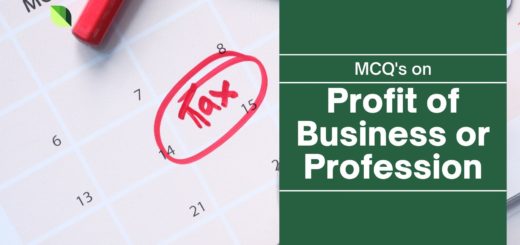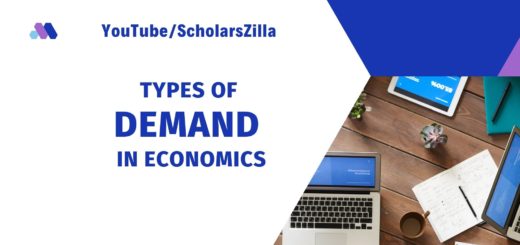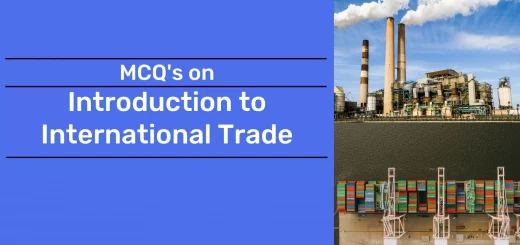Introduction to Cost Accounting MCQ | Cost Accounting (Free Resource)
Introduction to Cost Accounting MCQ

1. The cost Accounting system is developed for _______________ .
a) Financial institution
b) Government
c) Management
d) Shareholders
2. Cost Accounting is an _____________ reporting system.
a) External
b) Government
c) Financial
d) Internal
3. A location for which cost is incurred is a ______________ .
a) Revenue centre
b) Cost centre
c) Profit centre
d) Produaction centre
4. Product cost is _______________ cost.
a) Fixed
b) Prime
c) Indirect
d) Variable
5. Cost which can be identified with the output is called as ____________ .
a) Product
b) Fixed
c) Direct
d) Indirect
6. Interest on capital is ____________ cost.
a) Sunk
b) Imputed
c) Direct
d) Indirect
7. Overheads incurred in connection with factory is called _____________ overheads.
a) Office
b) Factory
c) Selling
d) None of the above
8. The cost which remains constant irrespective of output is called _____________ cost.
a) Variable
b) Product
c) Sunk
d) Fixed
9. Direct labour and factory overheads is called ___________ cost.
a) Conversion
b) Direct
c) Packing
d) Indirect
10. Cost of designing is ___________ expenses.
a) Office
b) Production
c) Indirect
d) Direct
| 1) Management 2) Internal 3) Cost centre 4) Variable 5) Direct 6) Imputed 7) Factory 8) Fixed 9) Conversion 10) Direct |
11. Variable cost per unit remains __________ .
a) Flexible
b) Constant
c) Both a & B
d) None of the above
12. Fixed cost per unit ___________ .
a) Constant
b) Fluctuates
c) Both a & B
d) None of the above
13. Cost relating to capacity is called __________ cost.
a) Fixed Cost
b) Capacity
c) Cost Plant Cost
d) None of the above
14. Cost which is unaffected by change in output is called as _________ .
a) Fixed Cost
b) Variable Cost
c) Period Cost
d) None of the above
15. Cost of _________ is broader in scope and comprises costing, cost accounting cost control and cost audit.
a) Production
b) Accountancy
c) Sale
d) None of the above
16. ___________ is that portion of cost which is consumed.
a) Income
b) Profit
c) Expense
d) None of the above
17. _________ is that part of cost which is consumed but did not result in Revenue.
a) Profit
b) Investment
c) Loss
d) None of the above
18. Asset is an __________ .
a) Period Cost
b) Product Cost
c) Expired Cost
d) None of the above
19. Cost of _________ is verification of cost accounts.
a) Audit
b) Accountancy
c) Production
d) None of the above
20. _________ have no access to cost records.
a) Insider
b) Outsider
c) Both a & b
d) None of the above
| 11) Constant 12) Fluctuates 13) Capacity 14) Fixed Cost 15) Accountancy 16) Expense 16\7) Loss 18) Expired Cost 19) Audit 20) Outsider |
21. A tonne of coal is a cost ___________ .
a) Price
b) Unit
c) Overheads
d) None of the above
22. In case of paper the cost unit is _________ .
a) Per Unit
b) Per kg/ rate
c) Per job
d) None of the above
23. In case of power the cost unit is _________ .
a) per job
b) PKW
c) Per Unit
d) Per cubic metre
24. In case of gas the cost unit is __________ .
a) Per Unit
b) Per Unit
c) Per cubic metre
d) per job
25. In case of interior decoration the cost unit is ___________ .
a) Per cubic metre
b) Per kg/per rate
c) per job
d) None of the above
26. The objective of __________ is to maximise ROI.
a) an organisation
b) Profit Centre
c) Investment Centre
d) None of the above
27. Anything for which a separate measurement of cost is required is _____________.
a) Cost period
b) Cost Object
c) Cost of Sale
d) None of the above
28. The example of cost object as product is ___________ .
a) T. V., Car
b) Milk,Timber
c) Tin packing, Boxes
d) None of the above
29. placement of an order is a cost object when it is _____________ .
a) Activity
b) Data
c) Report
d) None of the above
30. Timber in furniture is a __________ raw material.
a) Indirect
b) Basic
c) Precess
d) None of the above
| 21) Unit 22) Per kg/per rate 23) PKW 24) Per cubic metre 25) per job 26) Investment Centre 27) Cost Object 28) T. V., Car 29) Activity 30) Basic |
31. Milk and cream is a ___________ raw material in ice cream.
a) Primary Packing
b) Indirect
c) Basic
d) None of the above
32. Tin packing of ghee is a __________ packing material.
a) Primary
b) Direct
c) Indirect
d) None of the above
33. Carpenter in a furniture unit is a _________ labour.
a) Direct
b) Indirect
c) Factory Overheads
d) None of the above
34. Halwai in the confectionary unit is a ________ labour.
a) Actual
b) Production
c) Indirect
d) Direct
35. Labour in payroll department is an _________ labour.
a) Direct
b) Indirect
c) Actual
d) Production
36. Exciseduty based on output is _________ expenses.
a) Direct
b) Indirect
c) Production
d) Distribution
37. Lubricating oil is a ________ overhead.
a) Prime cost
b) Selling
c) Office
d) Factory
38. Cost of cloth in a shirt is ________ material.
a) Indirect
b) Fixed
c) Direct
d) None of the above
39. Normal cost is treated as a _______ .
a) Cost of Production
b) Cost of Material
c) Cost of Purchase
d) None of the above
40. __________ cost indicates what the cost should have been.
a) Historical
b) Estimated
c) Variable
d) Standard
| 31) Basic 32) Primary 33) Direct 34) Direct 35) Indirect 36) Direct 37) Factory 38) Direct 39) Cost of Production 40) Standard |
41. Relevant cost is __________ for decision making.
a) Standard
b) Relevant
c) Product
d) Urgent
42. The cost incurred by past decision is ________ cost.
a) Estimated
b) Standard
c) Historical
d) Marginal
43. Fixed cost which continues to be incurred even when the plant is temporarily shut down is called as _______ cost.
a) Direct
b) Sunk
c) Shutdown
d) Imputed
44. The cost which involves cash outlay is _________ cost.
a) Out of Pocket C
b) ost Book cost
c) Future cost
d) Postponable cost
45. The cost of next best alternative is ___________.
a) opportunity cost
b) Cash cost
c) Imputed cost
d) None of the above
46. The cost which does not involve any cash outlay is __________ cost.
a) Non Cash
b) Cash cost
c) opportunity cost
d) Imputed cost
47. Increase or decrease in total cost due to change in activity level is __________ .
a) Estimated cost
b) Fixed cost
c) Capacity cost
d) Differential Cost
48. Current purchase price of an identical asset is called as ___________ .
a) Production cost
b) Urgent cost
c) Replacement cost
d) Selling cost
49. The cost which cannot be avoided is called as _________ cost.
a) Committed
b) Discretion
c) Shutdown
d) Imputed
50. The cost which can be avoided by managerical decisions is called as ________ cost.
a) Discretion
b) Committed
c) Marginal
d) Shutdown
| 41) Relevant 42) Historical 43) Shutdown 44) Out of Pocket Cost 45) opportunity cost 46) Non Cash 47) Differential Cost 48) Replacement cost 49) Committed 50) Discretion |



Very helpful
Thanks
You are most welcome